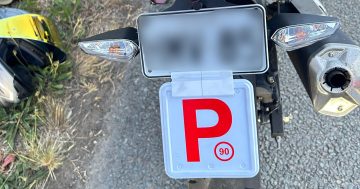After a review that apparently lasted 5 months, the A.C.T Government decided to raise the speed limit on the Gungahlin Drive Extension from 80 km/h to 90 km/h. The implementation was carried out over the weekend of the 10th and 11th of March 2012. After the implementation of the higher speed limit, the following issues are immediately apparent:
- Northern boundary of 80 and 90 km/h speed limit is unclear. A 700 metre discrepancy exists with the 90 km/h zone extending 700 metres further north for northbound traffic, than the point where the 90 km/h zone commences for southbound traffic. In violation of Australian Standard 1742.4 2.3.6.a.
- 2x situations where motorists merging onto the GDE do not pass a speed limit sign for over 1 km (from Barton Highway and Bandjalong Cres). In violation of AS 1742.4 3.2.7.d.
- 60 km/h speed limit may still be found on off ramps from the GDE to Belconnen Way and Ginninderra Drive, despite Belconnen Way and Ginninderra Drive having 80 km/h speed limits. Exits to Barton Highway from the GDE, and Exits to Hindmarsh Drive, Cotter road and William Hovel Drive have either have no speed limit signs or 80 km/h speed limits. Why the inconsistency?
- Less critical: small signs have been used to mark the boundaries of the new limit. Why are large signs used to mark the boundary of the 80 and 100 km/h zones at the southbound end of the Tuggeranong Parkway / Drakeford drive, yet small signs used at the northern end? There is no consistency in signage sizes. Could also be argued not compliant with AS 1742.4 3.2.8.
These issues were not created by bad weather or vandalism. They were created by a system within the A.C.T Government that allows speed limit signage to be implemented in an apparently low priority manner… despite enforcement of those speed limits being amoungst the most rigorous in the country.
(More detailed explanation and eventually pictures)
Not good enough
This decade has been declared by the United Nations to be the decade of Action for Road Safety. 1.3 million people are killed and up to 50 million are seriously injured each year on the worlds roads. The World Health Organisation has identified inappropriate and excessive speed as being one of the leading factors influencing road crashes. Jon Stanhope has also been quoted as saying that speed is “one of the biggest killers” on roads.
Despite this… ACT Government continues to implement speed limits in a manner which is so dumboundingly poor and apathetic, that it can only result in motorists treating speed limits in an equally apathetic manner, fueling the general disrespect for speed limits that the community already holds, and fueling the belief that speed cameras are about revenue.
The 90 km/h speed limit on the GDE is the result of a review so complicated that it took several months. Yet the implementation of the speed limit signs on this new and high profile road has apparently been carried out with the basic instructions “just replace all the 80 signs with 90 signs.” No thought has been given to existing issues with the 80 signage, or where the new 80/90 km/h boundary at the northern end of the road will need to exist. The speed limit signage certainly is not reflective of a government so concerned about motorists exceeding speed limits, that they operate the highest number of fixed speed cameras in the country.
The signage issue that now exists on the GDE was NOT created by vandalism or natural events, it was created by pure incompetence. It continues to be the case that the ACT Government, Roads ACT and their contractors are not concerned with having road users 100% aware of a speed limit by providing overt signage, with clear and unquestionable boundaries of speed limit zones.





















